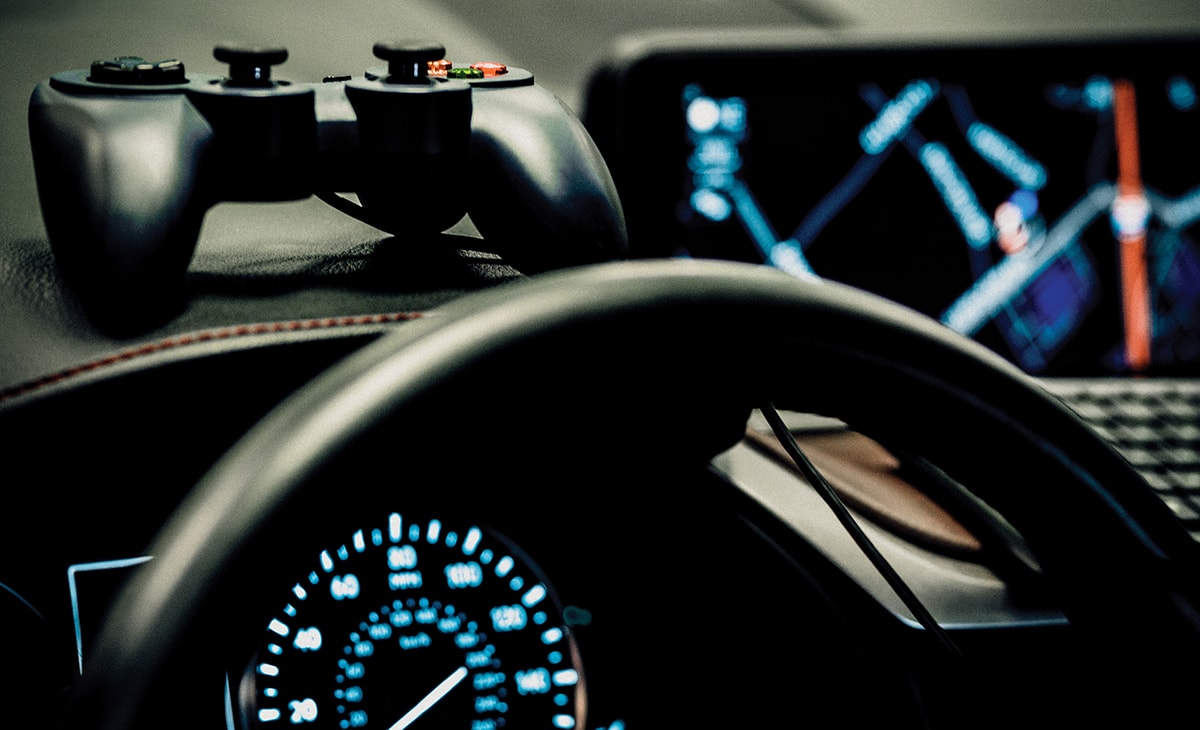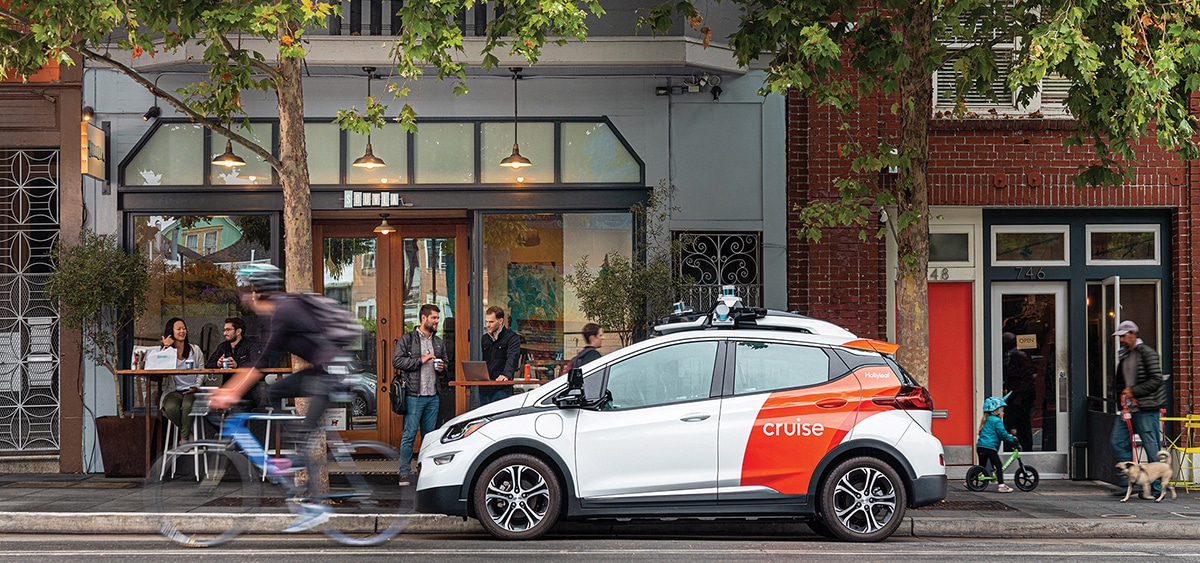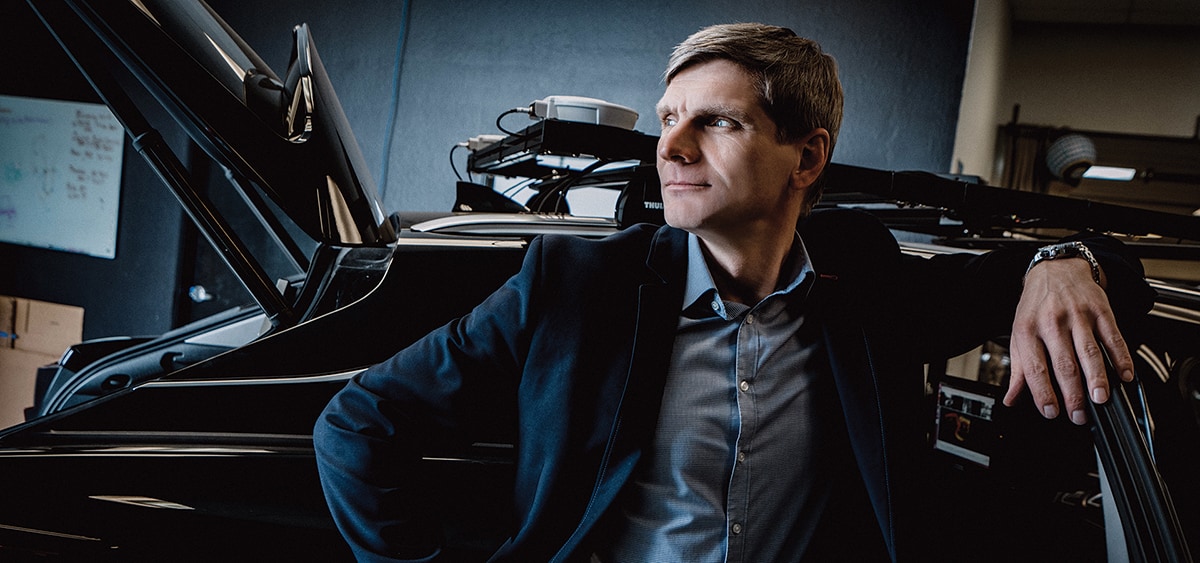Big Bets Are Being Placed on Turning Our Cars Over to Microprocessors
But are we ready to stop driving?
-
CategoryMakers + Entrepreneurs, Tech
-
Written byBrian Douglas
-
Photographed byAnastasia Blackman
When I talk to people about some of the benefits of autonomous driving, attributes like having your car drop you off and go find a place to park are real hits. Who wouldn’t like that, especially in pouring-down rain? Freedom of mobility for the elderly or a disabled person who can no longer drive gets plenty of hand raisers. Ditto for those occasions where you’re out celebrating with a drink or two, and happy to turn the keys over to unimpaired artificial intelligence. But zipping you down a twisty road with oncoming traffic? That scenario gets less enthusiasm. When it comes to error-free computing, we’ve all had a computer crash unexpectedly and some wonder if this autonomous idea is fully baked.
Defining Autonomy
Elon Musk loves to jump on his soapbox and pronounce that his Tesla vehicles, optioned with “Autopilot,” are self-driving. No, they’re not. The Society of Automotive Engineers (SAE) and the National Highway Traffic Safety Administration (NHTSA) have developed five levels of autonomous driving, from Level 1’s simple driver assistance including cruise control, to Level 5 where everyone is a passenger.
Some Tesla enthusiasts label their system as Level 2.5 because it adds steering inputs to dynamic cruise control, but current Tesla Autopilot models have “Partial Automation,” just like the Level 2 standard defines. And occasionally some owners—who neglect Tesla’s and the SAE standard’s admonition, “Driver must remain engaged with the driving task”—find themselves and their wrecked vehicle on the nightly news. Assuming they survive the crash.
Dr. Sven Beiker, a Stanford Graduate School professor and noted expert on autonomous driving, talked with me about self-driving levels along with how challenging each step was to safely attain. We both agreed that Level 3’s “Conditional Automation” was the silliest of the definitions. It’s language asserts, “Driver is a necessity, but is not required to monitor the environment. The driver must be ready to take control of the vehicle at all times with notice.”
When I first heard this description, I thought of the entirely unengaged motorist, sailing down the road while busy texting. A warning claxon suddenly calls for attention, and when the hapless driver looks up, he or she is confronted with what might look like the trailer from The Avengers movie. Beiker is sure no one is seriously working on Level 3 development.
The remaining SAE/NHTSA Levels 4 and 5 are labeled, respectively, High Automation and Full Automation. Both can do all the driving chores while occupants text, watch streaming media, or take a quick nap. However, there is a distinction with a slight difference: Level 4 may not function perfectly under all conditions, including severe weather, while Level 5 is fully autonomous.
My own definition is simple: If there’s no steering wheel or other driver controls, it’s Level 5. But there’s nothing simple about getting to this ultimate level of automation, regardless of what you might have been told.

Roads to Autonomy
Today’s vehicles are offered in a variety of propulsion systems, from gasoline engines to diesel, hybrid, fuel cell, and battery electric. And just as automotive power sources slug it out for share, various autonomous driving schemes are on different paths to reach that elusive Level 5 where the machine you’re riding in is in full control without outside assistance.
For those of us driving around Silicon Valley, spotting the obvious autonomous vehicles has become routine. The roof is often populated with LIDAR (Light Detection and Ranging) sensors that bounce laser beams off of surrounding objects to create 3D images and send them along to the autonomous system computer. A gaggle of cameras providing 360-degree vision accompany the LIDAR to complete the relatively close proximity, while short and medium-range radar looks fore and aft. And all this data is fed through an up-to-10-gigahertz ethernet network to a compact supercomputer.
The impressive hardware array, most of which can be successfully hidden in the bodywork of production vehicles, is the easy part. The real chore is creating software robust enough to take all this data and drive a vehicle safely in traffic with all the variables we routinely encounter when we’re behind the wheel.
Owners of Tesla models with the “Autopilot” system enabled, along with the few Cadillacs optioned with its “Super Cruise” option, can experience what seems to be a pretty competent self-driving system. Those schemes allow the cars to accelerate to highway speeds, merge with traffic, change lanes, and perform other tasks without the driver intervening.
If your vehicle is the right make and model but not clever enough to drive on its own, there’s even a classic Silicon Valley entrepreneurial solution available. Comma.ai is a small startup firm in San Francisco that’s developed an accessory that attaches to the windshield and connects with the vehicle’s harness to provide limited self-driving assistance. The “comma two devkit” costs $999 plus $88 a month and it might make your Toyota Corolla as seemingly clever as a Tesla.

Rocky Road
The road to self-driving is proving far more challenging than major industry players thought it might be. Waymo, the Alphabet (Google) subsidiary that, after 11 years of autonomous driving research is considered the leader in the field, just raised an eye-popping $2.5 billion in its first external funding round. Waymo may someday attain its hoped for $200-billion valuation, but today’s reality is that 950 well-compensated employees labor to generate an estimated $5 million annual revenue.
Currently, Waymo’s self-driving efforts are targeted to ride-sharing testing near Phoenix, Arizona, in autonomous Chrysler Pacifica minivans. The company also has developed autonomous systems for large over-the-road trucks, a category that many experts, including Beiker, assert will come to market sooner because of predictability and scale.
Cruise Automation, a key Waymo rival, raised $7.25 billion from GM and Honda and has 1,500 employees engaged in autonomous driving development. The company has 180 vehicles registered with California’s DMV for testing on public roads. Many Cruise staffers get a ride to their San Francisco offices in self-driving Chevy Bolts along with an engineer in the driver’s seat to engage if needed.
Former GM finance executive Dan Ammann is Cruise’s CEO and also served on the board of Lyft, the ride-sharing firm that General Motors invested in a few years ago. Ammann resigned from Lyft in June 2018 amid speculation that Cruise might create its own ride-share path. That suspicion was confirmed this year when the company unveiled its Origin, a fully autonomous passenger vehicle summoned with a smartphone app. There’s no steering wheel, pedals, or firm starting date for service to begin.
Another interesting participant in the autonomous vehicle derby is Nvidia, the Santa Clara company with origins in video gaming technology. Its powerful graphic processing hardware and lifelike 3D imaging allowed Nvidia engineers to create an environment with machine learning capability, and the company now works with nearly every automaker and Tier 1 supplier on autonomous development.
Of course, many small firms are engaged in what has become a big industry in Silicon Valley. Autonomous Stuff is among this gaggle of players and fills an interesting niche. The Morton, Illinois-based company with offices in principal automotive hubs provides platforms, products, services, and software to large and small enterprises engaged in autonomous system development. For instance, a software developer may want to see if the code really works on the road. In that case, Autonomous Stuff can deliver a fully developed vehicle for real-world testing.

The Trillion-Dollar Solution
It’s almost easier to list the few automakers, Tier 1 suppliers, ride share companies, and traditional technology giants who are not working on autonomous driving. By my rough calculation, a dozen of the world’s automakers (net worth $650 billion) along with major Tier 1 suppliers from Aptiv to ZD (another $350 billion) have all been active in autonomous vehicle research. If that seems like a lot, I haven’t included Apple, Google, Intel, and a host of technology companies that are also quite active in self-driving pursuits. And let’s not omit the self-interested ride-share firms Uber and Lyft.
With all the apparent brain power at work, no wonder we feel that an autonomous future is coming any day now. I’ve attended many interesting presentations on autonomous driving from Beiker and others over the last few years along with ritual pilgrimages to the Consumer Electronics Show (CES) in Las Vegas. Until recently, an autonomous driving future seemed pending at any moment. And that promise was reinforced with rides in vehicles that did their collective best to drive without assistance from the engineer in the driver’s seat ready to intervene.
Not long ago, Beiker added a fun new slide in his PowerPoint presentation on autonomous vehicles—a couple of Bill Murray stills from Groundhog Day. It always gets a good laugh from knowledgeable audiences, since exuberant promises of AI, Machine Learning, and autonomous vehicles populating our planet have been woefully optimistic.
Experts including Beiker agree that the most likely road to autonomous driving will connect the infrastructure and vehicles together along with making dramatic improvements in GPS technology. Japan recently enabled a more precise four-satellite protocol labeled Quasi Zenith Satellite System and has plans for a more ambitious seven satellites in the near future. Of course, that’s of little help for vehicles in Japan’s Yamate Tunnel, the world’s second largest of its kind.
Two decades ago, the FCC allocated 75 MHz of wireless spectrum to be used by “intelligent transportation systems,” or in plain talk, a special band to allow vehicles to communicate with each other. That system is called Dedicated Short-Range Communications (DSRC) and if some or all of that wavelength hasn’t been snatched up by other interests, it’s the best bet for an autonomous driving future.
In the meantime, the money invested so far in creating a world without drivers is amazing, especially when you consider that the elusive goal is something most buyers really don’t care that much about.
We’ve Got a Crush on This Often Overlooked California Wine Region
Thanks to the “Rainbow Gap,” more than 40 wineries call this valley home.
Actress Bella Thorne Enters the Cannabis Field With Forbidden Flowers
The influencer-turned-entrepreneur is the latest to make the jump.
Get the Latest Stories







